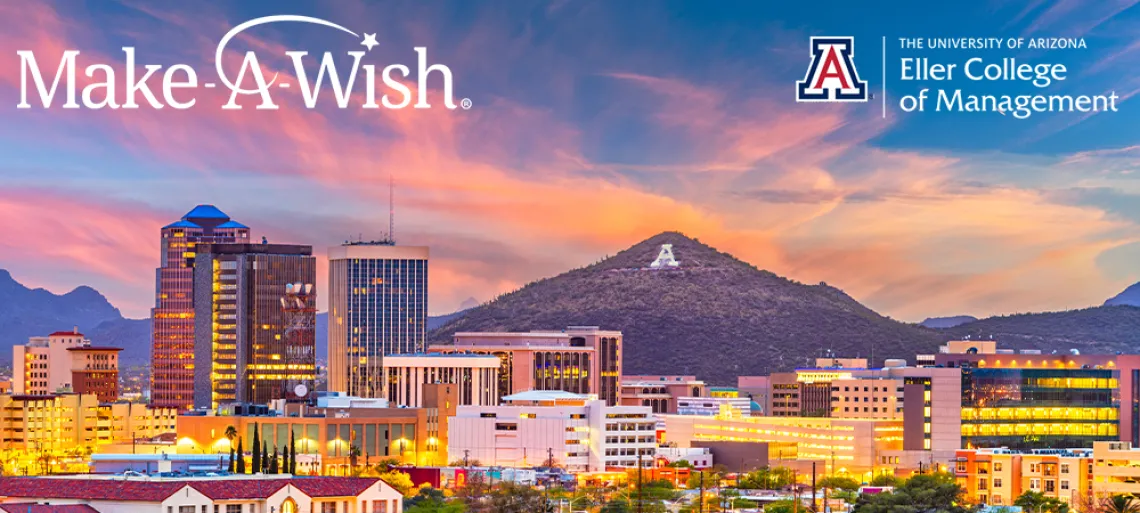Turning Wishes into Meals

The spring 2020 semester at the Eller College of Management took a drastic turn overnight, moving classes from in-person to online formats due to the current COVID-19 pandemic. While many classes are well on their way to getting used to this change, other classes had to completely change their semester plan—The Science and Practice of Influence was one of those classes.
The Science and Practice of Influence is taught by Stephen Robbins Professor of Management and Organizations Nathan Podsakoff. Some five years ago, Podsakoff wanted to find a way to have students apply the course content outside of class, so he created a collaborative project with Make-A-Wish Arizona.
The premise of the project was to “ethically and effectively apply the influence principles tactics and enhancers that we talked about in class to raising money for Make-A-Wish,” says Podsakoff.
What began as a project for undergraduate students, transitioned into a venture at the MBA level. “Students have more contacts in organizational settings, and their connections have more expendable income, so they are able to use their influence with colleagues and co-workers,” he says. “Last year we raised more than $100,000 for Make-A-Wish.”
Unfortunately, due to the COVID-19 pandemic, the class was not able to collaborate with Make-A-Wish this semester. This is because many Make-A-Wish recipients are immunocompromised and because most wishes require travel and contact with others. As a result, the organization has postponed many wishes.
That obstacle, however, created a new opportunity for Podsakoff and the students in his class. “With the Coronavirus impact on the economy, I thought it would be best to do something to help Arizona families, so we decided to partner with two Arizona food banks,” says Podsakoff.
Podsakoff and his students are partnering with The Community Food Bank of Southern Arizona in Tucson, and with St. Mary’s Food Bank Alliance in Phoenix. “We’re having to do this quickly, trying to get the students up to speed on the organizations and build just enough of a partnership that we can work for them,” he says.
Given that most food banks aren’t accepting food donations at the moment, the students are tasked with creating a website that will serve as a portal for the food banks’ websites, in which people can donate money.
“Because of the purchasing power that food banks have, a donation of one dollar that can be used to purchase one item at a normal grocery store can purchase seven items through the food bank,” says Podsakoff. “The goal of the project is to raise money for these organizations and to try and put as much money in their pockets as we can in a short period of time.”
As an incentive, Podsakoff encourages teams to raise money by making the project a bit of a competition. For the team who raises the most money, he personally matches that amount in dollar donations. At only one week into the process, students have already raised $31,000 in donations.
“I’m very pleased overall with the students adapting to this new environment,” he says. “But I am also very pleased with my fellow faculty members and all those who have worked extra hours and extra hard to make sure that we don’t fall off in any class so students can still succeed.”

